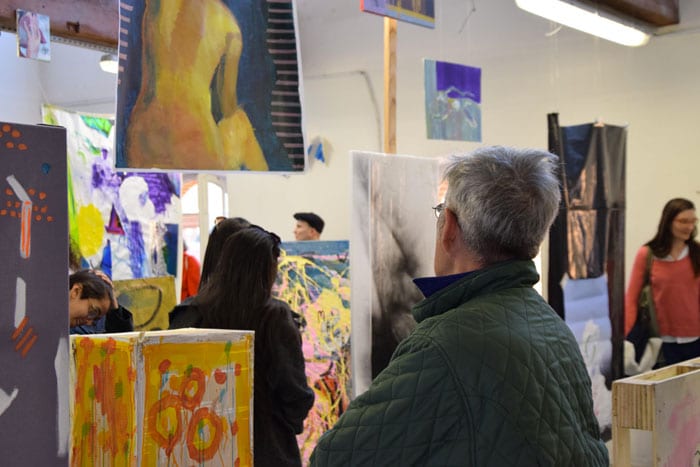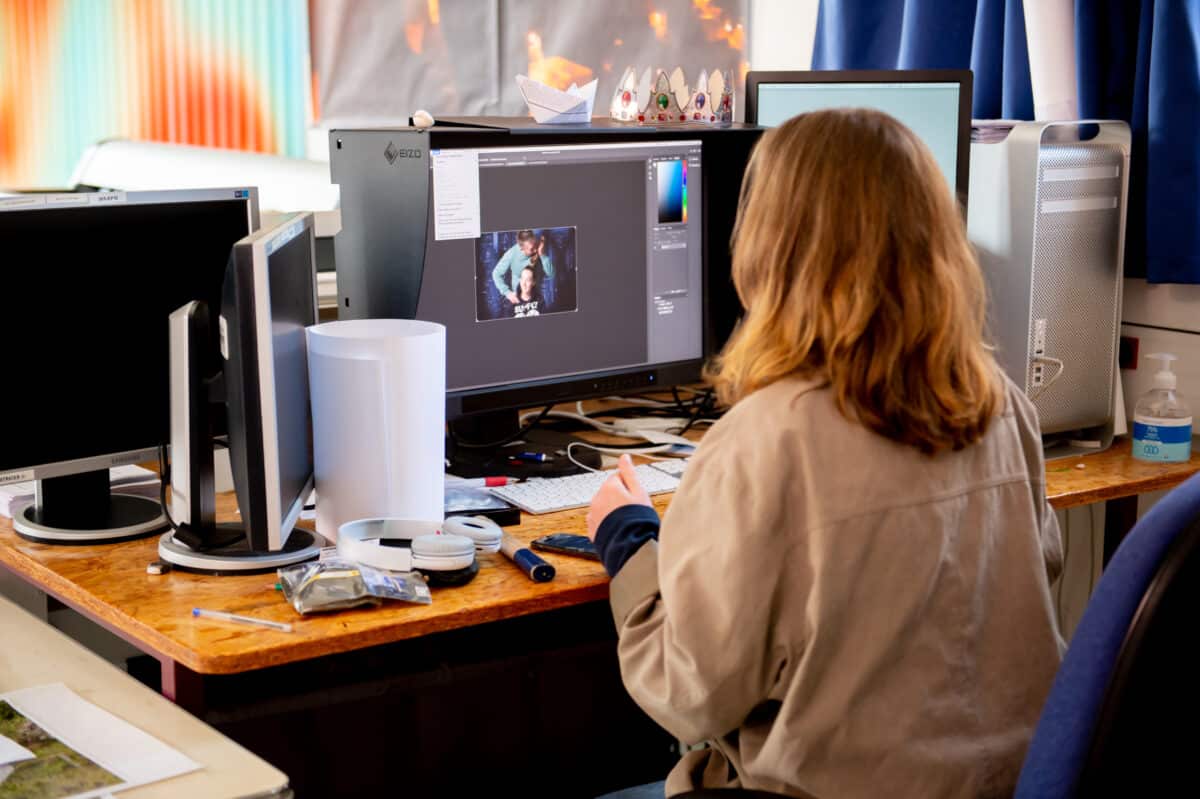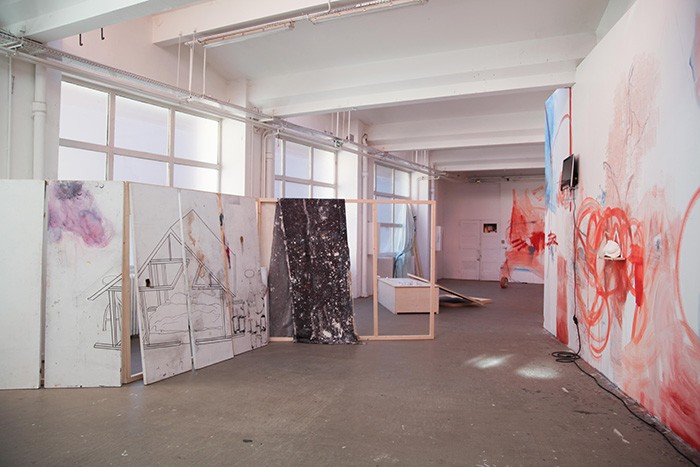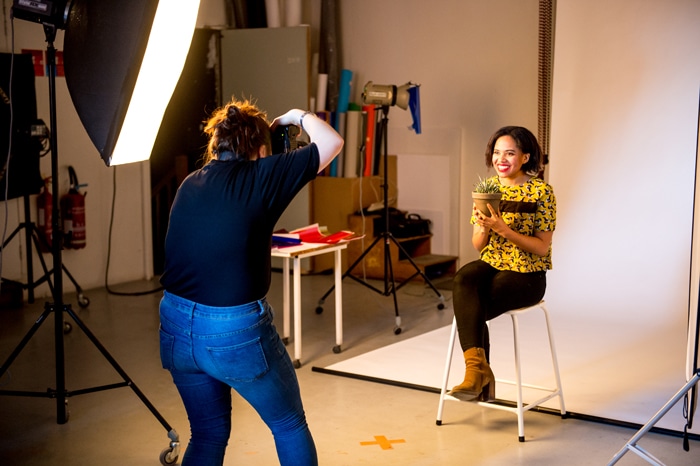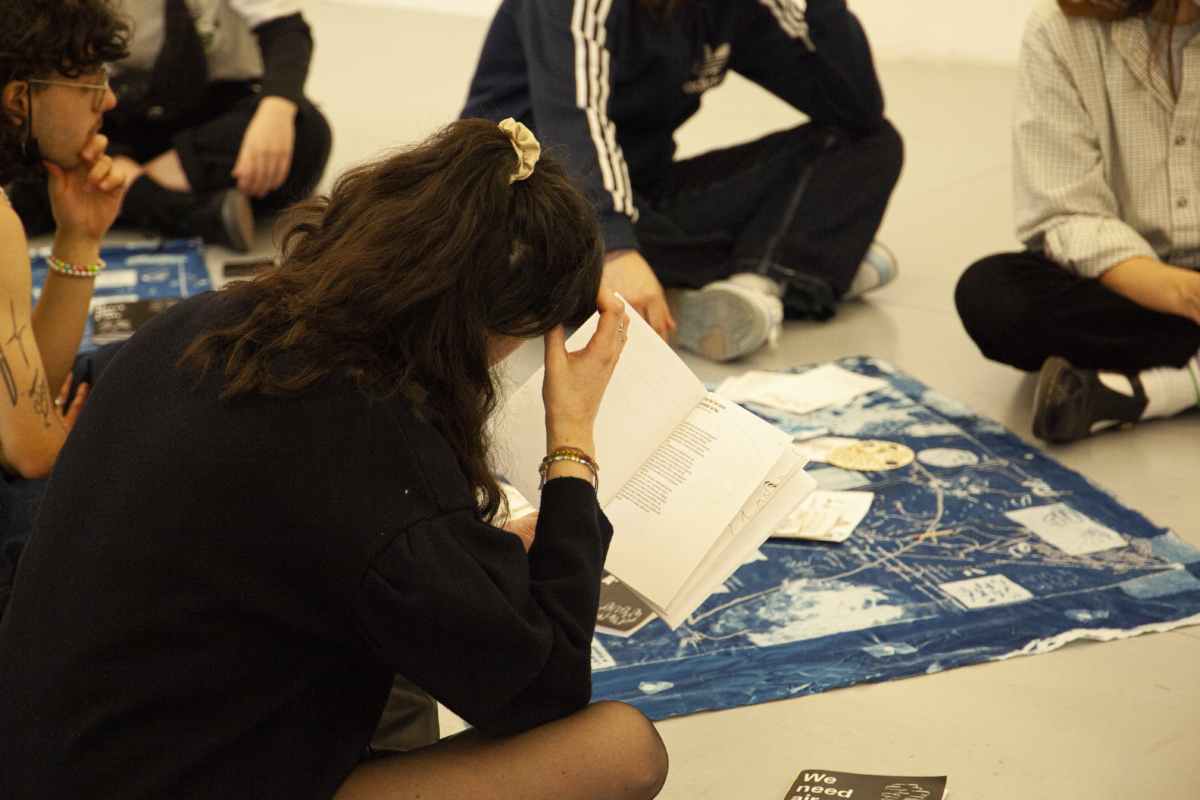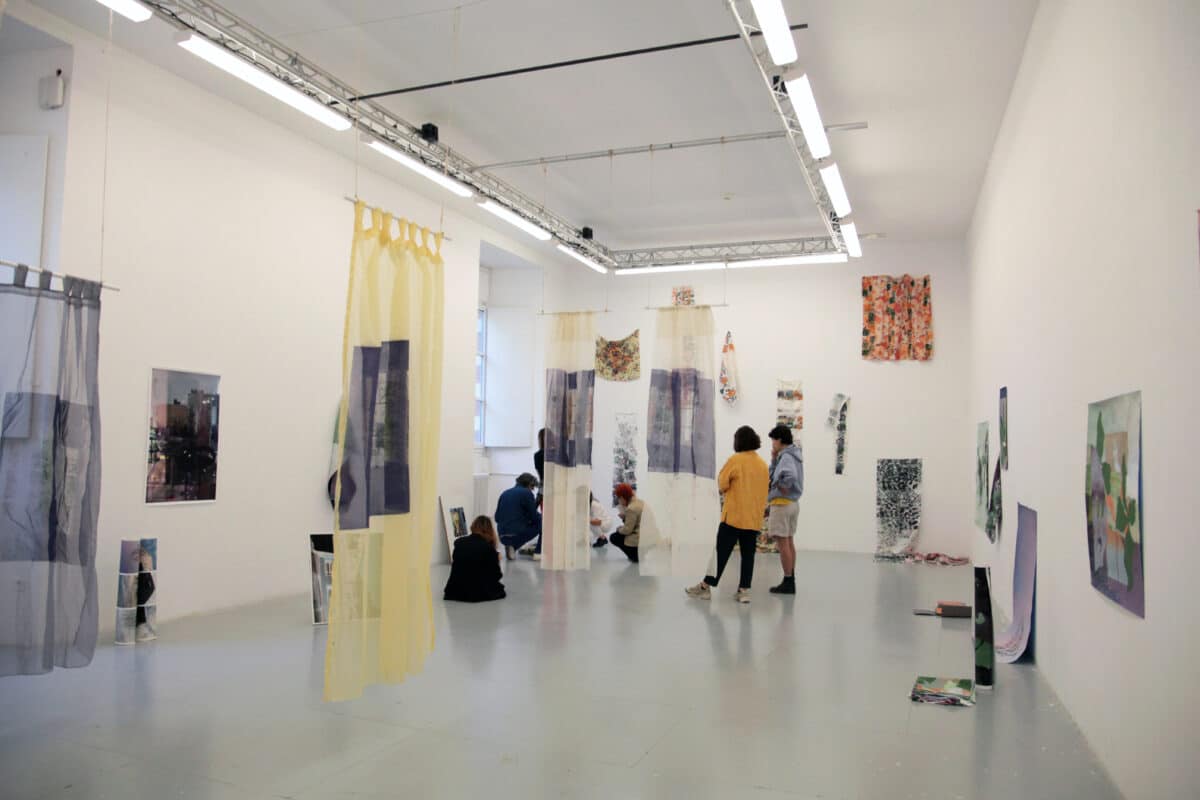Cycle 1 art
The art department is dedicated to the ways in which art exists and is emerging today. It reveals the artistic representations and practices of the future. Issues and questions are raised, which students face with the support, experience, and insights that professors have acquired from their own artistic or theoretical experience.
Cycle 1 is organised so that it fulfils a dual purpose. It makes it possible to grasp a variety of media and practices. It allows each student to establish a unique field of research. During the two years, emphasis is placed on the primary importance of ‘workshop culture’, i.e. the acquisition of knowledge through experimentation with media. This workshop time is a period in which to develop tools, to explore artistic thinking through practice.
By ‘workshop culture’, we mean: the path, the steps, the language, the tools, and the enriching resources required to bring an idea to fruition. In the topic on enriching resources, we will focus on elements of knowledge: history of media, techniques, and their context; fluency in written and spoken language; and development of a critical approach to the challenges of artistic practices. The topic on language will focus on the components required to envisage how an idea will be brought to fruition.
Media practice is often accompanied by installation as a tool for debate, risk-taking, and note-taking. Other presentation materials are used according to the nature and artistic sensibility of the projects (online layout, page layout, staging, projection). The development of ideas and forms takes precedence over assessment alone. The back-and-forth between thought and form gradually leads the student to refine his or her perspective.
Participation in conferences, seminars, registration for workshops, experience acquired during internships in France and abroad, but also well organised workshops or taking the initiative of having exhibitions outside the institute are all elements favourable to the social repute of any young artist and are a part of everyday life of the art option.
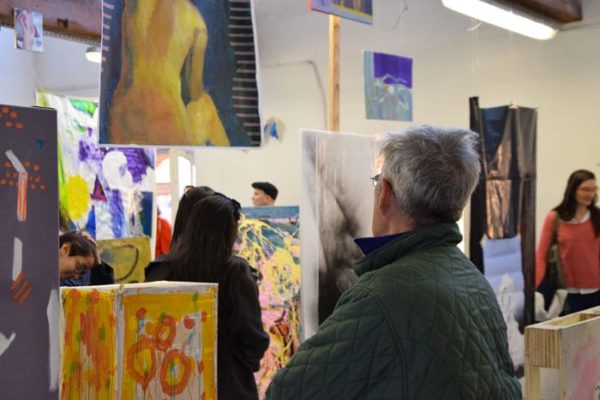
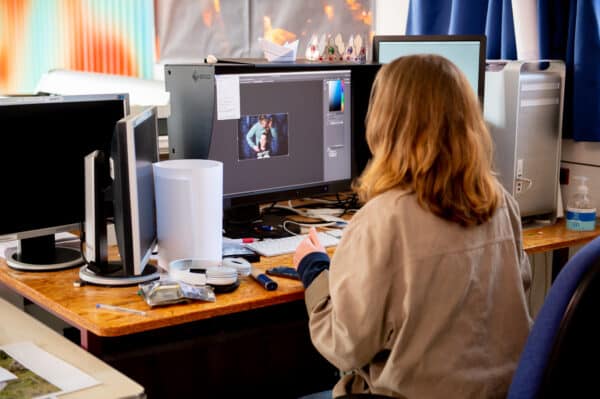
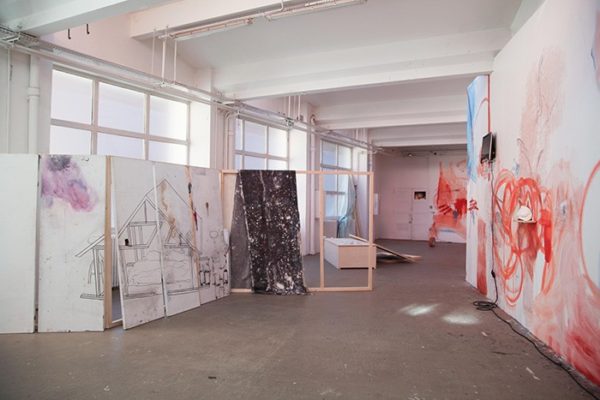
Course categories
Courses are divided into common courses (such as “Communes et Mystères”), artistic practice courses and introductory research workshops (AIRA). Students are required to choose the practical art courses and may choose an AIRA, provided they do not overlap.
In Year 2, students must choose three courses from among the practical art courses, for both semesters of the year. To these three courses may be added, if they so wish, the choice of an introductory research workshop (Aira), with a limit of one workshop.
In Year 3, at the beginning of the year, students must choose two art practice courses from the range offered, for both semesters of the year. To these two courses may be added, if they so wish, the choice of an introductory research workshop (Aira).
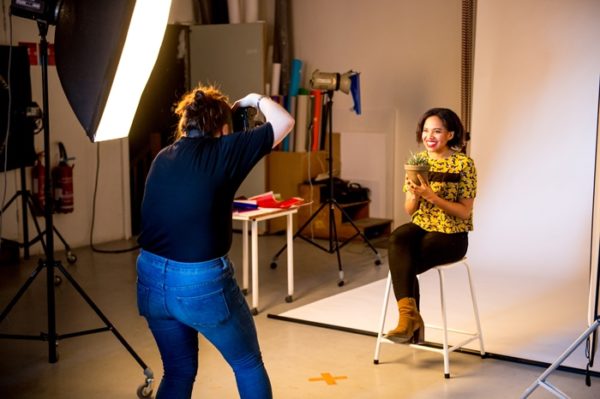
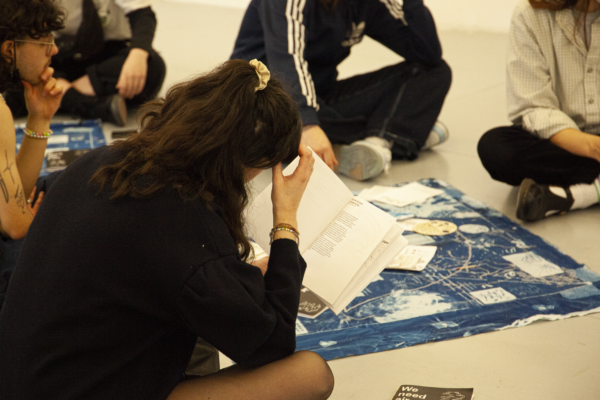
Internship
Students will be required to complete an internship between Semester 3 and Semester 5. A report on the internship must be submitted to the Director of Studies, the teachers in the 1st cycle art option and the pedagogical secretariat three weeks before the assessment in Semester 6. Credits for this internship will be awarded in semester 6.



Assessments
Credits are awarded by the college of teachers on the basis of elements of continuous assessment resulting from work during lessons and presentations designed as a “test gallery” or in “Communes et Mystères”.



The path to a diploma
During the DNA, the student’s research and career during the first six semesters are assessed by an external jury. The writing for the DNA will focus on a contemporary work of art of which the student is not the author, and which he or she has experienced in the conditions of distribution envisaged by the work. This written work of between 10,000 and 15,000 characters must be submitted to the teachers and the pedagogical secretariat in printed form. The preparation and follow-up of this piece of writing must be organized from the beginning of the year, with each student choosing the work he/she will write about and a teacher to accompany him/her in this work.
Before obtaining their DNA, students wishing to continue their studies in a second cycle at isdaT must appear before an admissions committee. The committee’s decision is based on a selection of work. A student may appear before more than one committee. They must also appear before the equivalence and admissions committees of other schools, to ensure that their studies are in line with their background and ambitions.
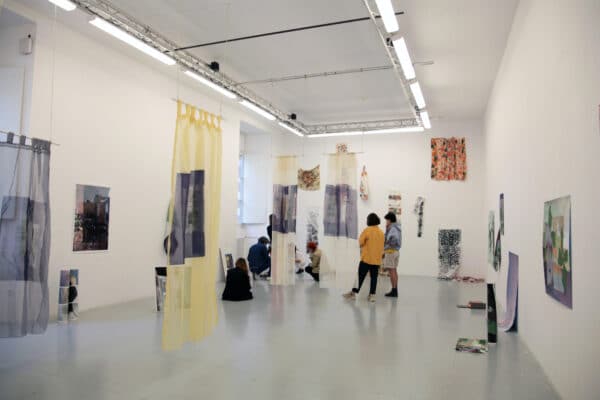
Admission into cycle 2
Before obtaining the DNA, students who wish to continue their second cycle studies at isdaT will appear before an admissions committee. The above is based on a selection of works. A student can appear before several committees. Students must also appear before the equivalence and admission committees of other schools, all while taking into account their career path and ambitions.
Find out more about cycle 2 art.



Courses catalog
All information concerning the course programme and timetables can be found on the dedicated Art, design and graphic design courses catalog website (in French).



Staff
Administrative staff
Art, design, and graphic design studies director
David Mozziconacci
david.mozziconacci@isdat.fr
Department secretary
Bettina Mellet and Fabrice Matéo
+33 (0)5 31 47 11 95
+33 (0)5 31 47 11 94
bettina.mellet@isdat.fr
fabrice.mateo@isdat.fr
Educational staff
Lists and biographies of professors and teaching assistants.







